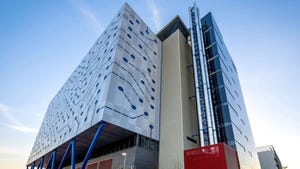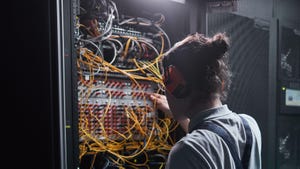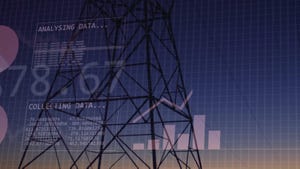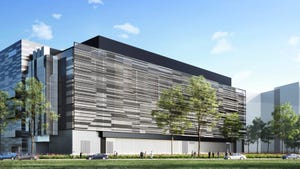How AI Is Reshaping Data Centers: Power, Cooling, and Infrastructure ChallengesHow AI Is Reshaping Data Centers: Power, Cooling, and Infrastructure Challenges
AI’s rapid rise is pushing data centers to their limits. Power, cooling, and infrastructure challenges are mounting – can they keep up with demand?

Every day, headlines tout the transformative potential of next-gen computing, promising to reshape industries, economies, and even our daily lives. But behind the scenes, these advancements rely on a less glamorous hero: the data center. Without the evolution of these physical hubs, the breathtaking promises of cutting-edge technology would be little more than headlines.
Data centers must grow and adapt as rapidly as the technologies they support. The power demands of AI, the thermal loads of dense compute environments, and the sheer physical weight of modern hardware create challenges that legacy infrastructure cannot sustain. Meeting these demands is essential for businesses to compete and for society to benefit from the next wave of innovation.
Power: A Growing Mountain to Climb
Power is the lifeblood of data centers, and demand is rising at an unprecedented pace. Globally, data centers already consume about 200 TWh annually – around 1% of total electricity demand.
With AI workloads driving a 160% projected increase in data center power use by 2030, this is not just a challenge; it’s a crisis in the making.
What’s driving this surge? AI models like GPT-4 and DALL-E require thousands of GPUs running simultaneously, each demanding significantly more energy than traditional servers. For example, training large AI models can consume megawatts of power daily, far outpacing efficiency gains from hardware advancements.
To manage this, several strategies are emerging:
AI-Specific Hardware: Developing and deploying chips optimized for neural networks can process tasks more efficiently, reducing overall energy consumption. These hardware solutions enable AI workloads to run with lower power demands than general-purpose processors.
Renewable Energy Integration: Companies like Amazon are investing in massive solar farms paired with battery storage to power data centers sustainably.
Nuclear Power Consideration: The industry is investigating small modular reactors to provide stable, renewable energy for future AI data centers.
Cooling: Battling the Heat
With great power consumption comes great heat dissipation. Cooling requirements have reached unprecedented levels as thermal loads strain traditional air-based systems.
Conventional solutions like advanced airflow management and efficient HVAC systems have seen success in specific environments. Facebook’s Prineville, Oregon, data center, for instance, uses desert air and evaporative cooling to cut energy use.
However, in high-density environments, liquid cooling is becoming indispensable. Liquid cooling systems represent a seismic shift in how data centers manage thermal loads. By circulating coolant directly to hardware components, liquid cooling systems offer greater efficiency and allow for denser rack configurations. And with it comes a flood of operational complexity. Retrofits to existing facilities demand extensive infrastructure overhauls, including the installation of specialized piping and coolants across server racks. These systems don’t just dissipate heat; they introduce new risks. Even a minor leak could result in catastrophic hardware failure, data loss, and significant downtime.
While promising, these systems bring challenges such as higher initial costs, maintenance complexity, and the need to safeguard against leaks. To mitigate these risks, data centers are adopting advanced leak detection systems to identify anomalies in pressure or flow rates in real time. Pairing these safeguards with automated shutoff valves ensures rapid containment of any breach, minimizing potential damage. Despite the promise of efficiency, adopting liquid cooling at scale requires thoughtful planning, ongoing maintenance, and careful integration into operational workflows.
Meanwhile, innovation continues with waste heat reuse. Some facilities repurpose heated water from cooling systems to warm neighboring buildings, reducing energy waste and supporting local communities.
Weight: The Physical Challenge of Density
Today’s data centers are straining under the physical weight of innovation. High-performance GPUs, critical for AI and quantum computing, can increase rack weights by up to 50%. The industry standard for floor loading – about 2,000 pounds per rack – is often inadequate for these setups.
To tackle this, data centers are employing solutions such as:
Reinforced Floors: Upgraded flooring systems ensure facilities can support heavier loads without compromising safety.
Strategic Layouts: Distributing heavier equipment across facilities reduces stress on individual areas.
Pod-Based Designs: Specialized modular rooms isolate high-density hardware, limiting the impact on the main structure.
Regulatory Pressures and Community Resistance
Beyond technical challenges, data centers face external pressures that threaten their growth. Governments are ramping up scrutiny, with measures like the European Union’s Energy Efficiency Directive requiring detailed reporting of energy and water use.
Water scarcity is another issue. Cooling systems in large data centers can consume millions of gallons annually, raising concerns in drought-prone areas. As the demands of AI and computing push data centers to the forefront of innovation, it’s hard to miss the irony of the tension between today’s unglamorous hero and one of life’s originals.
About the Authors
You May Also Like











